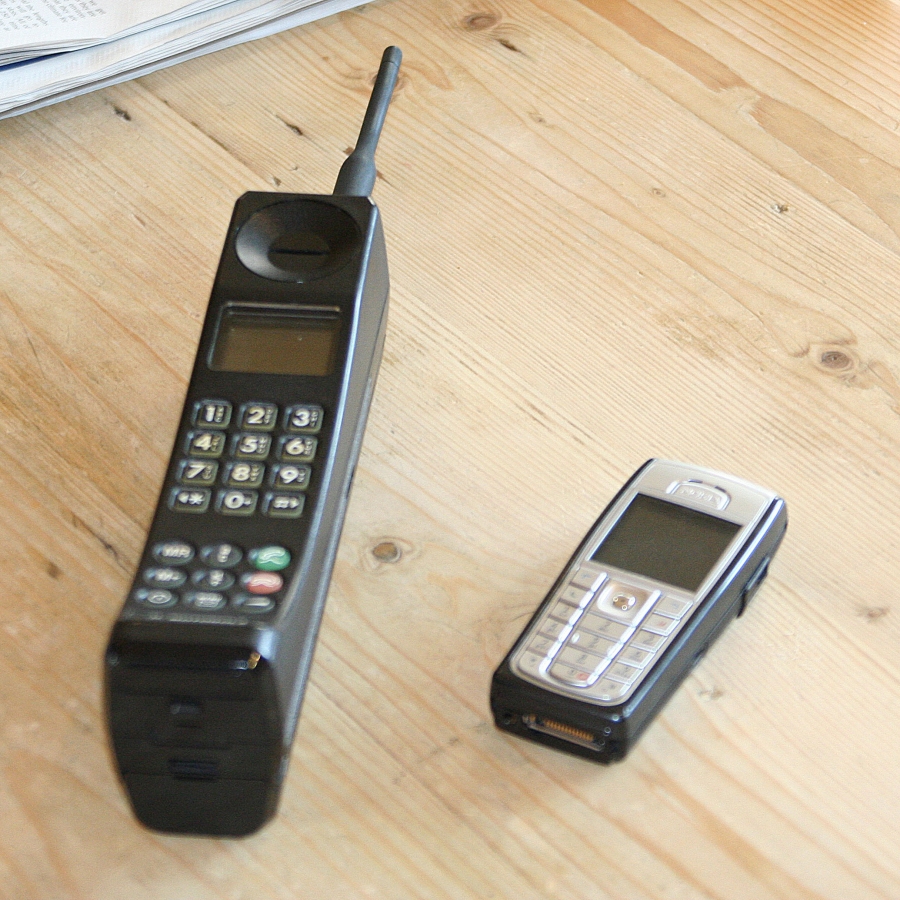Hisotry of The Mobile Phone

Mobile phones have become an almost necessary tool to use in our day to day lives. According to the U.N. telecommunications agency, the number of mobile phone subscribers has exceeded 5 billion worldwide and is only expected to rise. Of course this widespread popularity didn’t happen overnight. There’s a long, interesting history behind the mobile phone that tells the story of how they’ve developed into what they are today.
The first encounter many people had with mobile phones is back in 80’s when they were the size of small shoe-boxes with a foot-long antenna. However mobile devices were around long before that, and to uncover their true origin, we need to look a little further back. The first true wireless voice communication occurred in the 1930’s when telephone costumers residing in the United States could call ship passengers traveling in the Atlantic Ocean by going through a marine operator. Although at $7 per minute (estimated to be around $92.00 today), the fee limited it’s use as a luxury service which only the wealthy could afford.
In the 1940’s Motorola began pushing the technological limits of the time by introducing a two-way radios. Initially these devices were installed in police vehicles, ambulances, and taxi-cabs. Although, a few years after their development, Motorola released a hand-held, two-way radio known as the “Walkie-Talkie”, which allowed users to communicate with other nearby users through local radio frequency.
While Motorola pushed the envelope with the development of the two-way, it wasn’t until 1946 when they teamed up with Bell System to produce the Mobile Telephone Service. This service, while commercially successful at the time, still relied on the use of a human operator and was limited to very few channels per district. With their success, the two companies began focusing on developing a more efficient technology and released the Improved Mobile Telephone Service, which relied less on the use of a human operator. Still, though, this technology was limited to the use in cars and vehicles, and wasn’t completely portable.
While most of the civilian population was unaware, there was a technological race going on between Bell and Motorola to develop the first portable cellular device. In 1973, a Motorola researcher by the name of Martin Cooper placed the first analog mobile phone call to his rival at Bell using a mobile phone that weighed nearly 3 pounds and was 9 inches in length.
Between 1977 and 1978, the first cellular network was developed which allowed users to travel between cells. This technology, known as 1G, began to emerge in other countries as well, including Japan, Finland, Denmark, and Sweden. While the phones were technically “portable”, they were still extremely large, bulky, and would only hold a charge for around an hour.
Shortly after in the early 90’s, the 1G network was replaced by the 2G, which used digital radio signals instead of analog. Attempting to trend away from the over-sized mobile phones, several companies begin focusing on making the devices smaller and more compact. Another benefit to the 2G network was the introduction of SMS (Standard Messaging Service). This service allowed users to send text messages to other devices.
In recent years, the mobile phone industry has undergone many changes, including new 3G and even 4G networks. With the advancements of these networks, users worldwide can now access the internet with lightning-fast speed, as well as make calls to others. No one knows what the future holds for mobile devices, but from looking at the past, it’s safe to say these devices will only become faster, smarter, and more convenient to use.


Comments are currently closed.